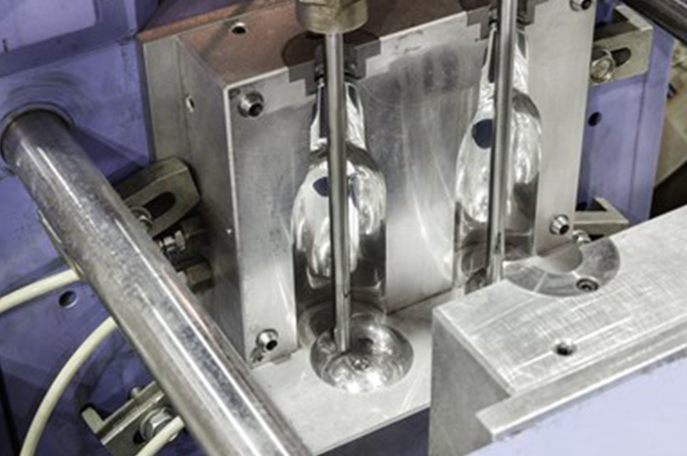Manufacturing a Round Plastic Pail Mould: A Step-by-Step Guide
Introduction:
Plastic pails are widely used in industries such as food processing, chemical manufacturing, and agriculture for packaging and storing various materials. The process of manufacturing a round plastic pail requires a meticulously designed mould. In this step-by-step guide, we will explore the key stages involved in creating a round plastic pail mould.
Step 1: Designing the Mould
The first step in manufacturing a round plastic pail mould is the design phase. Designers use computer-aided design (CAD) software to create a 3D model of the mould. They take into consideration factors such as the desired pail size, shape, and the material to be used. The design should also account for features like handles, lids, and any necessary branding.
Step 2: Creating the Mould Cavity
Once the design is finalized, the next step is to create the mould cavity. This is typically done using a computer numerical control (CNC) machine that accurately cuts the cavity shape into a high-quality steel block. The precision of the CNC machine ensures that the final mould will produce pails with consistent dimensions and a smooth finish.
Step 3: Heat Treatment and Polishing
After the mould cavity is cut, the steel block undergoes heat treatment to increase its hardness and durability. This process involves heating the steel to a specific temperature and then cooling it rapidly. Heat treatment helps prevent wear and tear during the injection moulding process.
Following heat treatment, the mould undergoes polishing to achieve a mirror-like finish. Polishing removes any imperfections or roughness on the mould surface, ensuring that the final plastic pails will have a flawless appearance.
Step 4: Assembling the Mould
In this step, various components of the mould, including the core and cavity, are assembled. The core creates the inner shape of the pail, while the cavity defines the outer shape. These components are carefully aligned and securely fastened to ensure proper functioning during production.
Step 5: Injection Moulding
The assembled mould is then placed into an injection moulding machine. Plastic material, usually in the form of small pellets, is melted and injected into the mould cavity under high pressure. The molten plastic takes the shape of the mould, filling the cavity completely. After a cooling period, the plastic solidifies, and the mould is opened to release the newly formed plastic pail.

Step 6: Finishing Touches
Once the plastic pail is removed from the mould, it undergoes various finishing processes. These may include trimming excess plastic, removing any rough edges, and adding any necessary additional components such as handles or lids. Quality control checks are also performed to ensure that the pails meet the required standards.
Step 7: Packaging and Distribution
The final step in manufacturing a round plastic pail is packaging and distribution. The pails are usually stacked, wrapped, and boxed in preparation for shipment to customers. Proper packaging is essential to prevent any damage during transit and to ensure that the pails reach their destination in optimal condition.
Conclusion:
Manufacturing a round plastic pail mould involves several intricate steps, from designing the mould to packaging the final product. Each stage requires precision and attention to detail to produce high-quality plastic pails. By following this step-by-step guide, manufacturers can ensure efficient production and deliver reliable plastic pails to meet the needs of various industries.
Previous:Plastic Bottle Crate Mould: Enhancing Sustainability and Efficiency in Manufacturing
Next: Injection Crate Mould: A Reliable Solution for Efficient Crate Production
-
Aerospace Mold: Innovation and Precision in Aerospace Manufacturing
2023-6-11
The aerospace industry is one of the most demanding and sophisticated industries in the world. At the heart of this indu...
View details -
Injection mold: precision tool for plastic product manufacturing
2024-9-20
As the core equipment in the production of plastic products, injection mold is an indispensable part of modern industria...
View details -
Plastic Injection Molding: The Essential Manufacturing Process
2023-6-2
Plastic injection molding is an essential manufacturing process that has become one of the most popular methods for prod...
View details -
Efficient Injection Molding Service for High-Quality Manufacturing Solutions
2023-6-3
Injection molding is a manufacturing process that has been around for many years, but it continues to evolve and become ...
View details -
Plastic Molds: The Key to Precision in Modern Manufacturing
2024-7-13
In the rapidly developing modern manufacturing industry, plastic molds are an indispensable tool, and their importance i...
View details -
Design and Production of High-Quality Plastic Chair Mould
2023-9-21
Introduction: The design and production of high-quality plastic chair molds play a crucial role in the manufacturing ind...
View details







